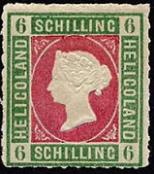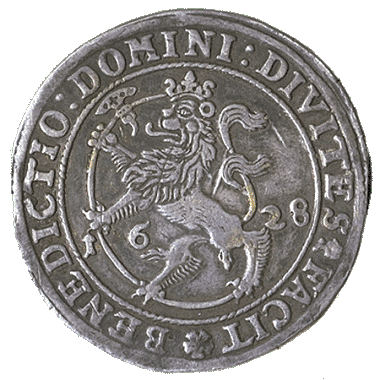|
Hamburg Mark
The Hamburg Mark refers to two distinct currencies issued in the city of Hamburg until 1875: * The Hamburg Mark Banco, a bank money and an accounting unit, and * The Hamburg Mark Courant, an actual coin. Each mark is divided into 16 ''schilling'', each of 12 ''pfennig''. Three marks were equal to a Reichsthaler, Germany's main unit of currency which the Hamburger Bank (Bank of Hamburg) defined and maintained until 1875. Hamburg Mark Banco The Hamburg Mark Banco was a form of bank money created by the Hamburger Bank in 1619 in order to provide a more reliable medium of exchange in the midst of the monetary chaos of the ''Kipper und Wipperzeit''. It accepted silver of verified weight from customers and credited their accounts with a Reichsthaler equivalent unit called the Hamburg Reichsthaler Banco, equal to 3 Hamburg Marks Banco and which subdivided further as * 1 Reichsthaler Banco = 3 Marks Banco, each of 16 schillings, and also as * 1 Reichsthaler Banco = 0.4 Pound Flemish, ... [...More Info...] [...Related Items...] OR: [Wikipedia] [Google] [Baidu] |
Hamburg
(male), (female) en, Hamburger(s), Hamburgian(s) , timezone1 = Central (CET) , utc_offset1 = +1 , timezone1_DST = Central (CEST) , utc_offset1_DST = +2 , postal_code_type = Postal code(s) , postal_code = 20001–21149, 22001–22769 , area_code_type = Area code(s) , area_code = 040 , registration_plate = , blank_name_sec1 = GRP (nominal) , blank_info_sec1 = €123 billion (2019) , blank1_name_sec1 = GRP per capita , blank1_info_sec1 = €67,000 (2019) , blank1_name_sec2 = HDI (2018) , blank1_info_sec2 = 0.976 · 1st of 16 , iso_code = DE-HH , blank_name_sec2 = NUTS Region , blank_info_sec2 = DE6 , website = , footnotes ... [...More Info...] [...Related Items...] OR: [Wikipedia] [Google] [Baidu] |
Vienna Monetary Treaty
The Vienna Monetary Treaty (also known as the Vienna Coinage Treaty) of 1857 was a treaty that set a currency standard for use across the German Zollverein states, Austria, and Liechtenstein. The official name of the treaty was Monetary Treaty Between the German States of 24 January 1857. History At the time there were three competing monetary systems in Germany, in Austria, Prussia and south Germany. The Mint Conference and Convention in Vienna sought to eliminate the problems from this, and the treaty was the result. The treaty remained in force until the unification of Germany in 1871. Main terms Article 1: The pound, with a weight of 500 g, would serve as the basis of the coinage system. Articles 2 and 3: There would be a single silver standard, but three national coinage systems would be permitted: * The Prussian standard of 30 thalers per pound of silver, to replace the prior 14-thaler per Cologne Mark standard, for use in Prussia, Saxony, Hanover, Hesse, Grand Duchy of Sax ... [...More Info...] [...Related Items...] OR: [Wikipedia] [Google] [Baidu] |
History Of Hamburg
Hamburg was founded in the 9th century as a mission settlement to convert the Saxons. Since the Middle Ages, it has been an important trading center in Europe. The convenient location of the port and its independence as a city and state for centuries strengthened this position. The city was a member of the medieval Hanseatic trading league and a free imperial city of the Holy Roman Empire. From 1815 until 1866 Hamburg was an independent and sovereign state of the German Confederation, then the North German Confederation (1866–71), the German Empire (1871–1918) and during the period of the Weimar Republic (1918–33). In Nazi Germany Hamburg was a city-state and a '' Gau'' from 1934 until 1945. After the Second World War Hamburg was in the British Zone of Occupation and became a state in the western part of Germany in the Federal Republic of Germany (Since 1949). Etymology According to Ptolemy, the settlement's first name was Treva. A fortress there was name ... [...More Info...] [...Related Items...] OR: [Wikipedia] [Google] [Baidu] |
Currencies Of Germany
This is a list of current and historical currency of Germany. The sole currency of Germany has been the Euro since 2002. List {, class="wikitable sortable" , - !class=unsortable , Currency ! Area !Date created !Date abolished , - , Euro , , 1999 , current currency , - , Deutsche Mark , (unified) , 1990 (unified)1948 (West Germany) , 2002 , - , East German mark , , 1948 , 1990 , - , Saar franc , Saarland , 1947 , 1959 , - , Saar mark , Saarland , 1947 , 1947 , - , Reichsmark , , 1924 , 1948 , - , German Rentenmark , , 1923 , 1924 , - , German Papiermark , , 1914 , 1923 , - , German gold mark , , 1873 , 1914 , - , Vereinsthaler , North German states , 1857 , 1873 , - , South German gulden , South German states , 1754 , 1873 , - , North German thaler , North German states , 1690 , 1873 , - , Hamburg mark The Hamburg Mark refers to two distinct currencies issued in the city of Hamburg until 1875: * The Hamburg Mark Banco, a bank money and an accounting unit, and * The H ... [...More Info...] [...Related Items...] OR: [Wikipedia] [Google] [Baidu] |
Schleswig-Holstein
Schleswig-Holstein (; da, Slesvig-Holsten; nds, Sleswig-Holsteen; frr, Slaswik-Holstiinj) is the northernmost of the 16 states of Germany, comprising most of the historical duchy of Holstein and the southern part of the former Duchy of Schleswig. Its capital city is Kiel; other notable cities are Lübeck and Flensburg. The region is called ''Slesvig-Holsten'' in Danish and pronounced . The Low German name is ''Sleswig-Holsteen'', and the North Frisian name is ''Slaswik-Holstiinj''. In more dated English, it is also known as ''Sleswick-Holsatia''. Historically, the name can also refer to a larger region, containing both present-day Schleswig-Holstein and the former South Jutland County (Northern Schleswig; now part of the Region of Southern Denmark) in Denmark. It covers an area of , making it the 5th smallest German federal state by area (including the city-states). Schleswig was under Danish control during the Viking Age, but in the 12th century it escaped full control ... [...More Info...] [...Related Items...] OR: [Wikipedia] [Google] [Baidu] |
Lübeck
Lübeck (; Low German also ), officially the Hanseatic City of Lübeck (german: Hansestadt Lübeck), is a city in Northern Germany. With around 217,000 inhabitants, Lübeck is the second-largest city on the German Baltic coast and in the state of Schleswig-Holstein, after its capital of Kiel, and is the 35th-largest city in Germany. The city lies in Holstein, northeast of Hamburg, on the mouth of the River Trave, which flows into the Bay of Lübeck in the borough of Travemünde, and on the Trave's tributary Wakenitz. The city is part of the Hamburg Metropolitan Region, and is the southwesternmost city on the Baltic, as well as the closest point of access to the Baltic from Hamburg. The port of Lübeck is the second-largest German Baltic port after the port of Rostock. The city lies in the Northern Low Saxon dialect area of Low German. Lübeck is famous for having been the cradle and the ''de facto'' capital of the Hanseatic League. Its city centre is Germany's most extens ... [...More Info...] [...Related Items...] OR: [Wikipedia] [Google] [Baidu] |
Northern Germany
Northern Germany (german: link=no, Norddeutschland) is a linguistic, geographic, socio-cultural and historic region in the northern part of Germany which includes the coastal states of Schleswig-Holstein, Mecklenburg-Vorpommern and Lower Saxony and the three city-states Berlin, Hamburg and Bremen. It contrasts with Southern Germany, Western Germany and Eastern Germany. Language Northern Germany generally refers to the ''Sprachraum'' area north of the Uerdingen and Benrath line isoglosses, where Low German dialects are spoken. These comprise the Low Saxon dialects in the west (including the Westphalian language area up to the Rhineland), the East Low German region along the Baltic coast with Western Pomerania, the Altmark and northern Brandenburg, as well as the North Low German dialects. Although from the 19th century onwards, the use of Standard German was strongly promoted especially by the Prussian administration, Low German dialects are still present in rural areas, with an ... [...More Info...] [...Related Items...] OR: [Wikipedia] [Google] [Baidu] |
German Gold Mark
The German mark (german: Goldmark ; sign: ℳ) was the currency of the German Empire, which spanned from 1871 to 1918. The mark was paired with the minor unit of the pfennig (₰); 100 pfennigs were equivalent to 1 mark. The mark was on the gold standard from 1871–1914, but like most nations during World War I, the German Empire removed the gold backing in August 1914, and gold and silver coins ceased to circulate. After the fall of the Empire due to the November Revolution of 1918, the mark was succeeded by the Weimar Republic's mark, derisively referred to as the Papiermark ("Paper mark") due to hyperinflation in the Weimar Republic from 1918–1923. History The introduction of the German mark in 1873 was the culmination of decades-long efforts to unify the various currencies used by the German Confederation.pp 205-218 https://books.google.com/books?id=GrJCAAAAIAAJ&pg=PA205#v=onepage&q&f=false The Zollverein unified in 1838 the Prussian and South German currenc ... [...More Info...] [...Related Items...] OR: [Wikipedia] [Google] [Baidu] |
Vereinsthaler
The Vereinsthaler (, ''union thaler'') was a standard silver coin used in most German states and the Austrian Empire in the years before German unification. The Vereinsthaler was introduced in 1857 to replace the various versions of the North German thaler, many of which were already set at par with the Prussian thaler. While the earlier Prussian Thaler was slightly heavier at th a Cologne mark of fine silver (16.704 grams), the Vereinsthaler contained grams of silver, which was indicated on the coins as one thirtieth of a metric pound (Pfund, equal to 500 grams). Distribution The Vereinsthaler was used as the base for several different currencies. In Prussia and several other northern German states, the Vereinsthaler was the standard unit of account, divided into 30 Silbergroschen, each of 12 Pfennig. See Prussian Vereinsthaler. In Saxony, the Neugroschen was equal to the Prussian Silbergroschen but was divided into 10 Pfennig. See Saxon Vereinsthaler. Some other n ... [...More Info...] [...Related Items...] OR: [Wikipedia] [Google] [Baidu] |
Norwegian Rigsdaler
The rigsdaler specie was a unit of silver currency used in Norway, renamed as the speciedaler in 1816 and used until 1873. Norway used a common reichsthaler currency system shared with Denmark, Hamburg and Schleswig-Holstein until 1873 when the gold standard was implemented in Scandinavia and the German Empire. Rigsdaler specie The reichsthaler currency system used in Northern Europe until 1873 consisted of the silver Reichsthaler specie (''Rigsdaler specie'') worth 120 ''skillings'' in Norway and Denmark, and the lower-valued ''Rigsdaler courant'' worth th of specie or 96 ''skillings'' (both units worth 60 and 48 ''schellingen'', respectively, in Hamburg and Schleswig-Holstein). The Hamburg Bank equated 9 reichsthalers specie to a Cologne Mark of fine silver, hence 25.28 g silver in a ''rigsdaler specie''. Coins In the late 18th and early 19th centuries, coins were issued in denominations of 1, 2, 4, 8 and 24 skilling, , , , , and 1 rigsdaler specie. Banknotes In 1695, gove ... [...More Info...] [...Related Items...] OR: [Wikipedia] [Google] [Baidu] |






